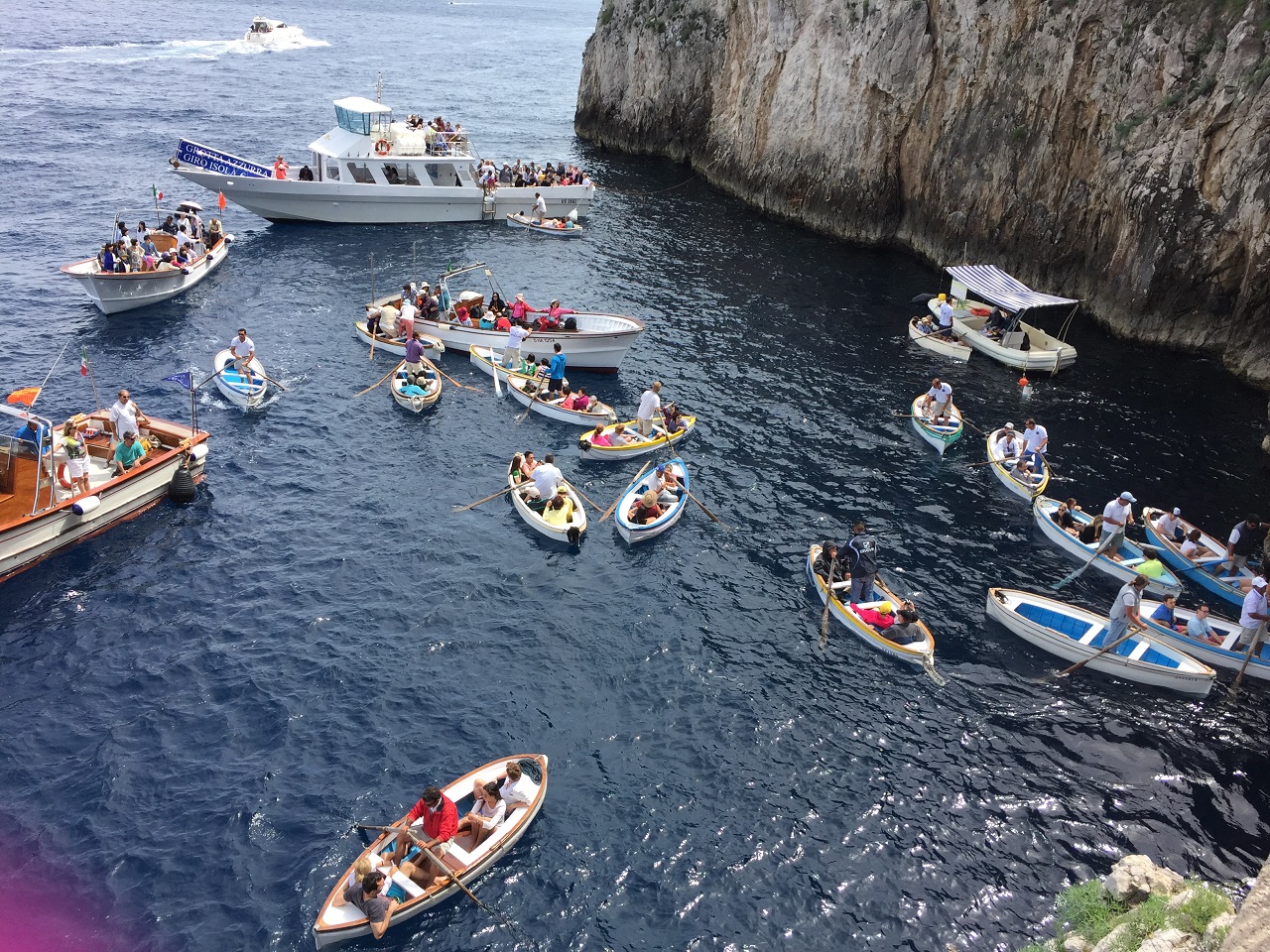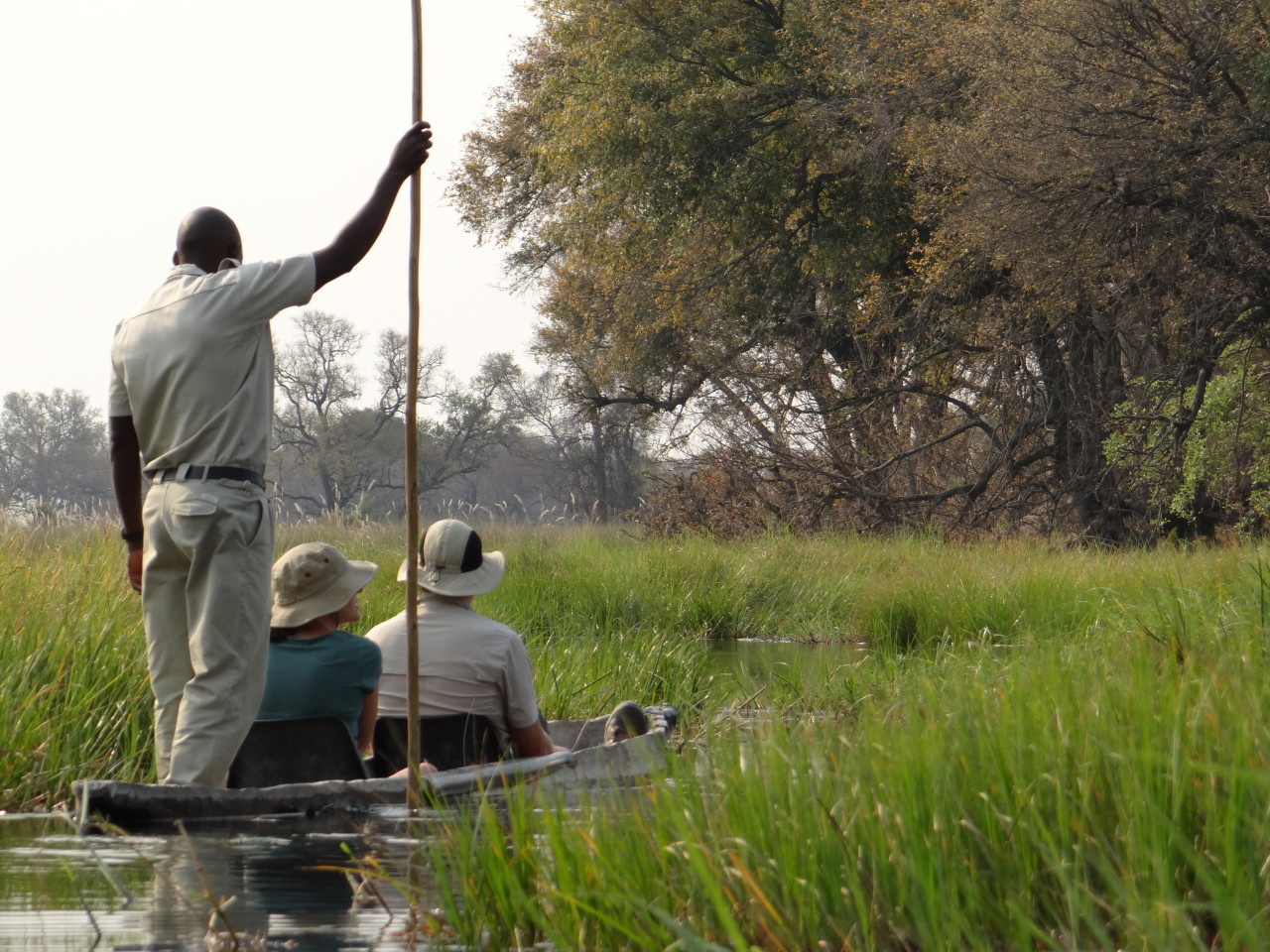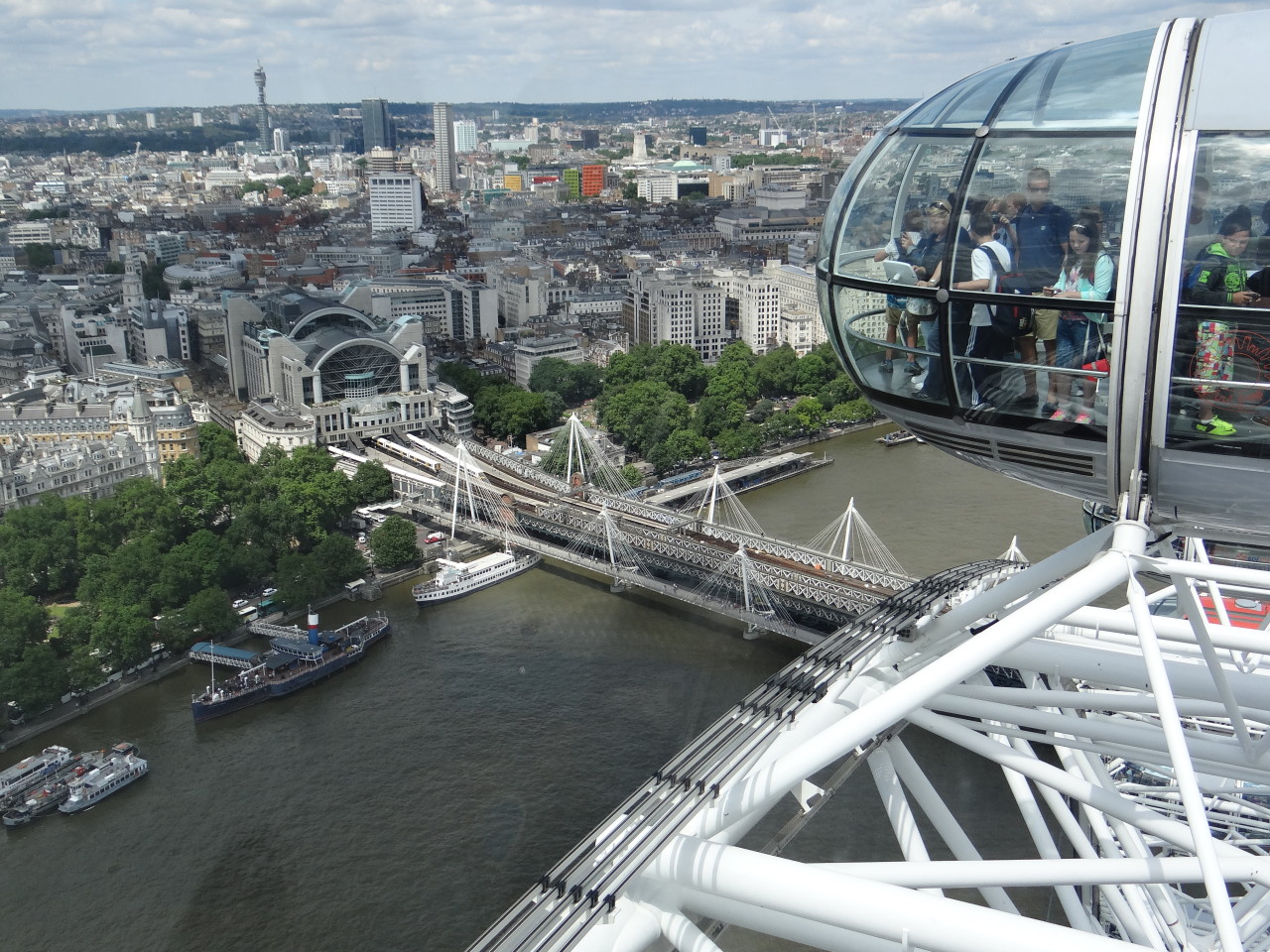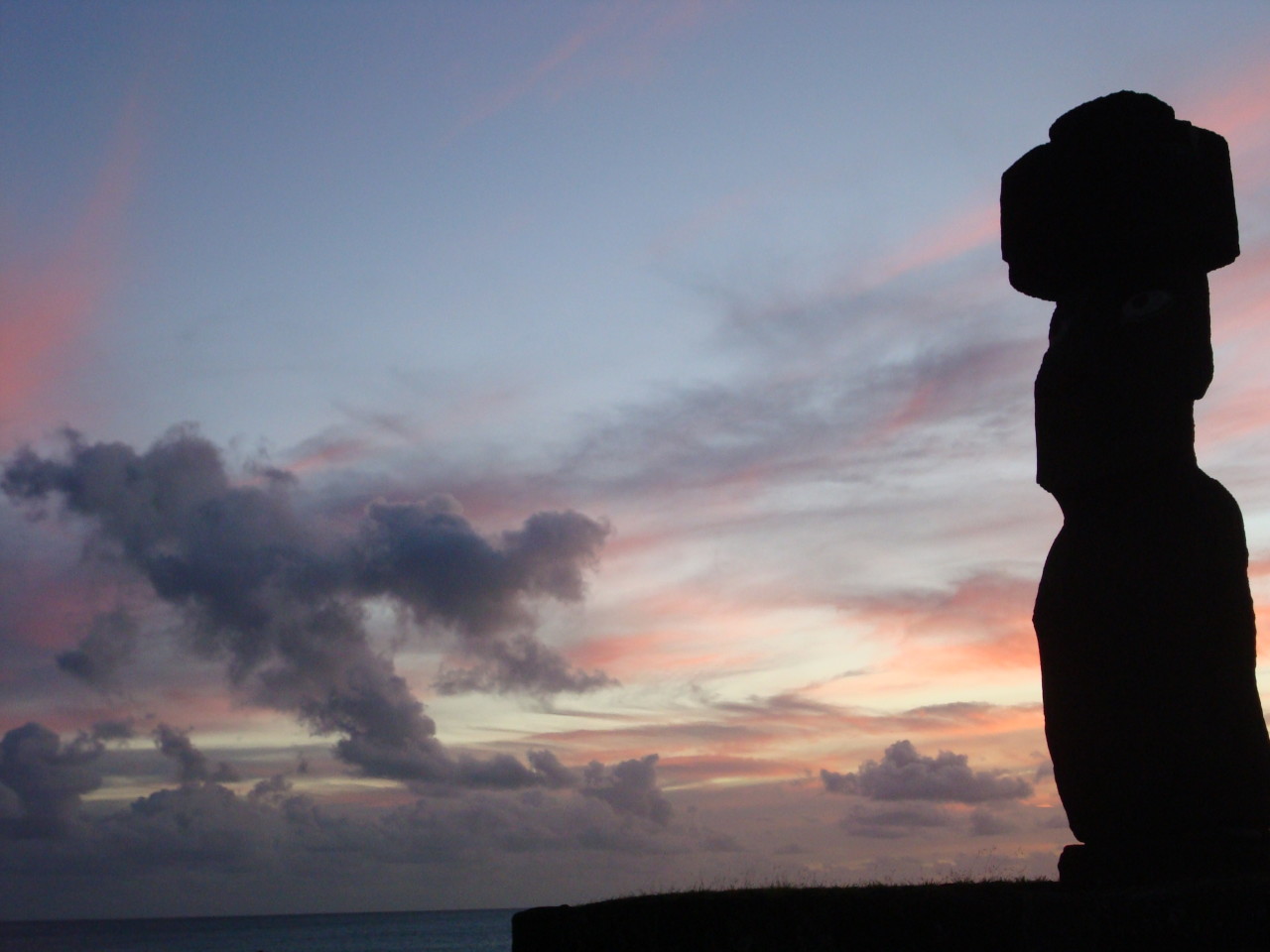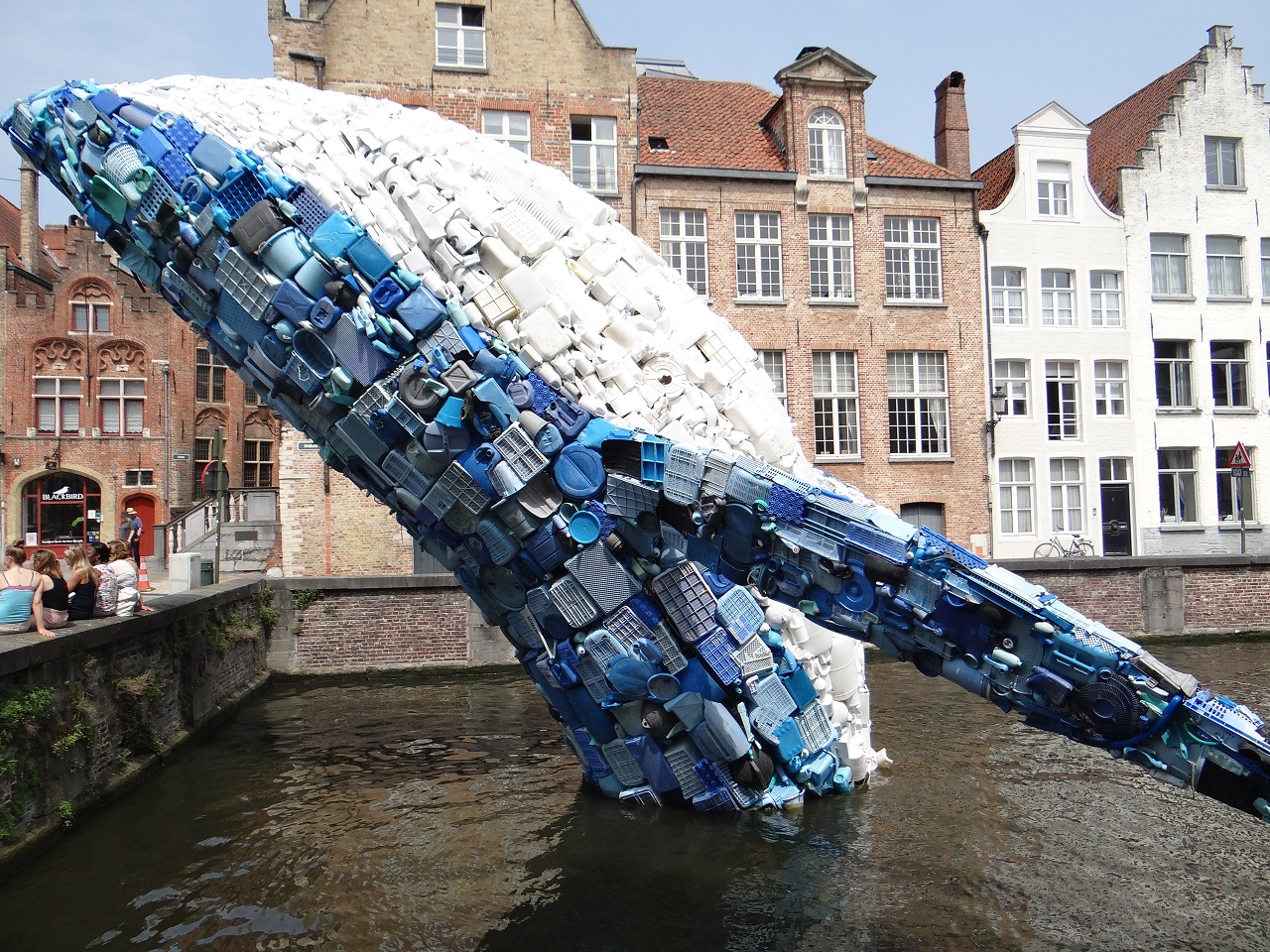
When I turned the corner walking toward the canal and the city center of Bruges (site of the Jan Van Eyck statue), I didn’t expect to see a massive four story high plastic whale “Skyscraper” aka “The Bruges Whale” trying to jump out of the water in the canal. The Bruges Whale is part of the Triennale Brugges which is an art exhibit held every three years throughout the city of Bruges, Belgium; this year’s theme is “Liquid City” and features fifteen works meant to be experienced, provoke conversation and serve as a meeting point. Contemporary art will definitely evoke a feeling from me – more often it is anger and confusion and sometimes it causes me to explore further and challenge my own beliefs. The Bruges Whale was a haunting piece that even now, a few weeks removed, continues to resonant with me.
Experiencing the Bruges Whale
Art can be very powerful and emotional, it might even get you to think. “The Bruges Whale” is like a tail fin to the head. It’s message is so strong you almost want to cry when you think about what people are doing to the oceans and to the wildlife (what’s left). For me, it felt as if the Bruges Whale wanted to escape the water and the plastic and beach itself on land (where it would likely die) rather than live in the water. You might think (or feel) otherwise when you see it in person or experience it from the water. That’s what art is meant to do….be an individual experience that may lead to a larger conversation. I kept coming back to the Bruges Whale many times during my three day visit to Bruges.

I saw it from all angles including the water on the canal boat tour. Each time I saw it at different times of day and night it was powerful and affected me. I watched other people interact with it and was a bit surprised that there wasn’t an environmental group or other nearby to engage people in the art – to talk about the plastic in the water and our responsibility today and in the future. For many, it was a photo op but I felt that so much more could have been said, more could be done to educate visitors or have a call to action. So while this was to be a post about plastic whale art in Bruges (look it’s so pretty), it’s a bit more now.

Time To Tweet “The Bruges Whale” and Learn More

So as I tweeted out my photos and mentioned it was “thought provoking”, the design firm replied to tag the other groups involved in creating this Skyscraper. So here’s more information about this art piece and hopefully once Triennale Brugges concludes in September, the Bruges Whale “Skyscraper” will travel to other cities to start a conversation about our role in plastics, consumption and ocean garbage.
The New York based architect design firm, StudioKCA, designed Skyscraper (aka The Bruges Whale) and they collected over 5 tons of blue and white plastic waste from the Pacific Ocean that washed up along the Hawaiian shoreline. They also collected plastic waste found in the NYC waterways and Bruges canals. 5 tons of plastic waste in 4 months! That alone should make you sad, it makes me sad. Working in partnership with the Surfrider Foundation (Kauai Chapter) and Hawaii Wildllife Fund to collect, clean and sort the plastics that would be used in the Bruges Whale piece, StudioKCA also sought additional funding of $15,000 via their Bruges Whale Kickstarter campaign to support the heavy lifting (steel fabrication, assembly, transport, etc.).
I’m sure you are thinking 5 tons of blue & white plastic must be a lot but sadly it’s barely a drop of water in the ocean. Estimates are that there are 150 million (yes million) tons of plastic trash in the ocean with an additional eight million tons added each year. This isn’t global warming, this is MAN MADE catastrophe in the water in my opinion. The ocean has become a trash can and sadly wildlife suffer when they eat plastic (the now infamous turtle wtih a straw in its nose), get caught up in plastic and can ultimately die from plastic. The Bruges Whale is trying to make a statement about plastic waste in the oceans and the fact that we need to rethink how we use and dispose of plastic.
The Ban on Plastic Drinking Straws & Plastic Bags
Plastic bans have been in the news and social media lately (or maybe I’m more tuned in now). This past week, I’ve seen more stories and chatter about banning plastic straws, which isn’t a big laundry basket that ended up in the sea but given the sheer number of straws used worldwide on a daily basis (500 million per day in America!!!) – plastic drinking straws are a powerful start. They are so thin that they usually get past the filters at the processing centers. There are alternatives to plastic straws each with pros and cons so you need to research your best options if you give up plastic straws. Vancouver’s ban on plastic straws, foam cups and containers was recently passed and they are the first Canadian city to do so so this ban on plastics is only growing.
Another insidious plastic is the plastic bag that we all have from Target, CVS or a supermarket. These plastic bags are banned in a few U.S. cities like Seattle (where I received my first brown paper bag at Target) and many countries. I bring my own reusable bag for shopping when I travel (otherwise there is a fee for each plastic bag). It’s just a small step that each traveler can easily action immediately on their next trip.

Choosing to bring your own reusable bag and refusing to use plastic drinking straws are a small step that we, as travelers, can make during our travels and in our everyday lives. It’s also something that we can educate others on – this plastic disaster. Many travelers already bring their own water bottles to refill in airports, hotels and in Bruges, there is a public water fountain to drink from. Again, all of these are small steps you can choose to do or not do. To be honest, I’m still learning – I’ve got my bag, say no to straws but am still having issues with bottled water abroad. During my trip to Rotterdam/Bruges/Ghent, restaurants served glass bottles of water (expensive) or charged (nominal) for filtered water. I would generally buy a small bottle of water (€2) and then go to the market for the larger (and cheaper at €1.10) bottles to refill the smaller bottle. Is recylcing enough? I don’t know to be honest.

The Great Pacific Garbage Patch
During my plastic googling, I learned (and sadly can’t unlearn) that there is something called “The Great Pacific Garbage Patch” (seriously? garbage patches and more than one? apparently about five known so far) is about 80% land made (Asia and the U.S.) while the other 20% is from boats in the water that either dump their trash or lose their shipping containers along the route. Recent estimates put the size at twice the state of Texas and costs to clean it up astounding (one estimate was $500m+ for one year). Since it’s “international waters” no country is keen to invest the time and money to clean the ocean so it’s up to the various non-profits that wish to do so. Since the garbage patch is still floating in the Pacific Ocean, it’s crazy to imagine that the bulk of the plastic materials collected and used in the making of the Bruges Whale “Skyscraper” wasn’t part of that. A few encouraging groups and people working on this massive endeavour The Ocean Cleanup and a Dutch high school kid who had an idea that now with $320m investment has produced a solution that is currently being tested in the Pacific Ocean.

Final Thoughts – The Bruges Whale & Plastic Waste
The Bruges Whale (Skyscraper) in the Triennale Bruges is hard to miss as it is only five minute walk beyond the Belfry (stay to the right and follow the road as it turns right toward the canal). The sheer size of the plastic whale is at first pretty stunning. After you read the information board it might make you ponder the oceans and plastic trash. But it may also stay with you long after you see it. In this Liquid City of Bruges – everything is fluid and change is possible once you look past the cute whale and truly see (and feel) the message.

How do you deal with plastic where you live? when you travel? Thoughts on the Bruges Whale?
